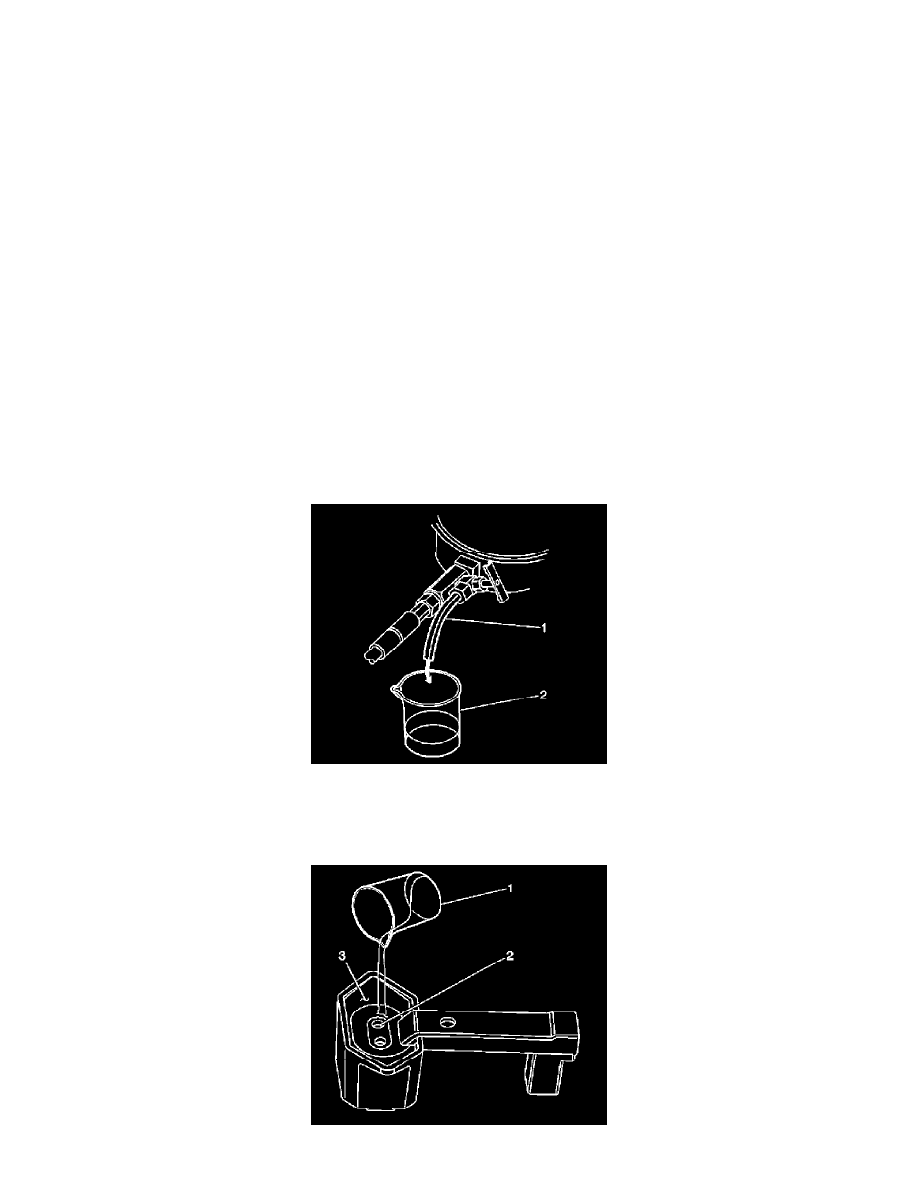Century V6-3.1L VIN J (2005)

Fuel: Testing and Inspection
With Special Tool
ALCOHOL/CONTAMINANTS-IN-FUEL DIAGNOSIS (WITH SPECIAL TOOL)
TEST DESCRIPTION
Fuel quality can affect vehicle performance. Gasoline and gasoline blends that are contaminated or contain excessive amounts of alcohol can affect
vehicle driveability, fuel economy, fuel system components, and emissions. Excessive alcohol in the fuel may cause fuel system corrosion,
deterioration of rubber components, and subsequent fuel filter restriction. Some types of alcohol are more detrimental to fuel system components than
others. Ethanol is commonly used in gasoline, but in concentrations of no more than 10 percent. Some fuels, such as E85, contain a very high percent
of ethanol. Fuel with more than 10 percent ethanol may cause driveability conditions in vehicles such as hesitation, lack of power, stalling, or no start.
If excessive alcohol in the fuel is suspected, then use the following procedure to test the fuel quality.
TEST PROCEDURE
1. Turn ON the J 44175 Fuel Composition Tester.
2. Verify the fuel composition tester is operational by measuring the AC frequency output with a DMM. A frequency without a fuel sample in the
test cell indicates that the tester is working correctly.
3. Install the J 34730-1A Fuel Pressure Gage. Refer to Fuel Pressure Gage Installation and Removal.
CAUTION: Wrap a shop towel around the fuel pressure connection in order to reduce the risk of fire and personal injury. The towel will
absorb any fuel leakage that occurs during the connection of the fuel pressure gage. Place the towel in an approved container when the
connection of the fuel pressure gage is complete.
4. Close the bleed valve on the fuel pressure gage.
IMPORTANT: you will need to bleed the J 34730-1A a few times in order to obtain an accurate fuel sample.
5. Place the bleed hose (1) of the fuel pressure gage into the 100 ml beaker (2).
6. Command the fuel pump relay ON with a scan tool.
7. Slowly open the bleed valve on the fuel pressure gage, until an adequate fuel sample is obtained.
8. If water appears in the fuel sample, clean the fuel system and replace the fuel in the vehicle. Refer to Fuel System Cleaning.
